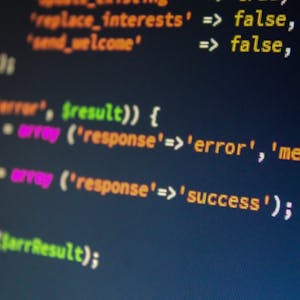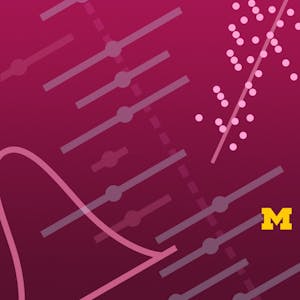Spacecraft Dynamics Capstone: Mars Mission
About this Course
The goal of this capstone spacecraft dynamics project is to employ the skills developed in the rigid body Kinematics, Kinetics and Control courses. An exciting two-spacecraft mission to Mars is considered where a primary mother craft is in communication with a daughter vehicle in another orbit. The challenges include determining the kinematics of the orbit frame and several desired reference frames, numerically simulating the attitude dynamics of the spacecraft in orbit, and implementing a feedback control that then drives different spacecraft body frames to a range of mission modes including sun pointing for power generation, nadir pointing for science gathering, mother spacecraft pointing for communication and data transfer. Finally, an integrated mission simulation is developed that implements these attitude modes and explores the resulting autonomous closed-loop performance. Tasks 1 and 2 use three-dimensional kinematics to create the mission related orbit simulation and the associated orbit frames. The introductory step ensures the satellite is undergoing the correct motion, and that the orbit frame orientation relative to the planet is being properly evaluated. Tasks 3 through 5 create the required attitude reference frame for the three attitude pointing modes called sun-pointing, nadir-pointing and GMO-pointing. The reference attitude frame is a critical component to ensure the feedback control drives the satellite to the desired orientation. The control employed remains the same for all three pointing modes, but the performance is different because different attitude reference frames are employed. Tasks 6 through 7 create simulation routines to first evaluate the attitude tracking error between a body-fixed frame and a particular reference frame of the current attitude mode. Next the inertial attitude dynamics is evaluated through a numerical simulation to be able to numerically analyze the control performance. Tasks 8-11 simulate the closed-loop attitude performance for the three attitude modes. Tasks 8 through 10 first simulate a single attitude at a time, while tasks 11 develops a comprehensive attitude mission simulation which considers the attitude modes switching autonomously as a function of the spacecraft location relative to the planet. The material covered is taking from the book \"Analytical Mechanics of Space Systems\" available atCreated by: University of Colorado Boulder

Related Online Courses
Embark on a comprehensive journey into Go programming with this hands-on course. You\'ll begin with the fundamentals, mastering Go syntax, variables, loops, and functions. Build a strong foundation... more
This Specialization is intented for beginning to intermediate software developers seeking to develop knowledge and skill in implementing testing techniques and tools in the development of their... more
Sending and receiving emails efficiently is a valuable skill in the modern workplace. Many times, people find themselves sending out routine information to clients and employees which can lead to... more
This is a self-paced lab that takes place in the Google Cloud console. In this Qwiklab, you set up a redundant pair of Windows Domain Controllers (DC) with AD using a new Virtual Private Cloud... more
This specialization is designed to teach learners beginning and intermediate concepts of statistical analysis using the Python programming language. Learners will learn where data come from, what... more








